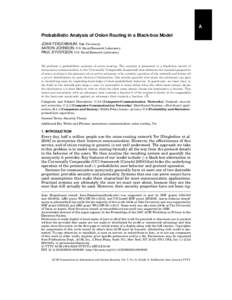<--- Back to Details
| First Page | Document Content | |
|---|---|---|
 Date: 2012-07-09 20:58:21Computing Internet Cryptography Internet privacy Onion routing Routing Tor Universal composability Anonymity Proxy server IP Posterior probability |
Add to Reading List |
| First Page | Document Content | |
|---|---|---|
 Date: 2012-07-09 20:58:21Computing Internet Cryptography Internet privacy Onion routing Routing Tor Universal composability Anonymity Proxy server IP Posterior probability |
Add to Reading List |